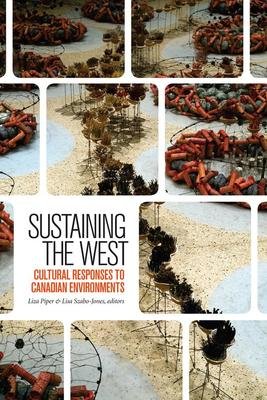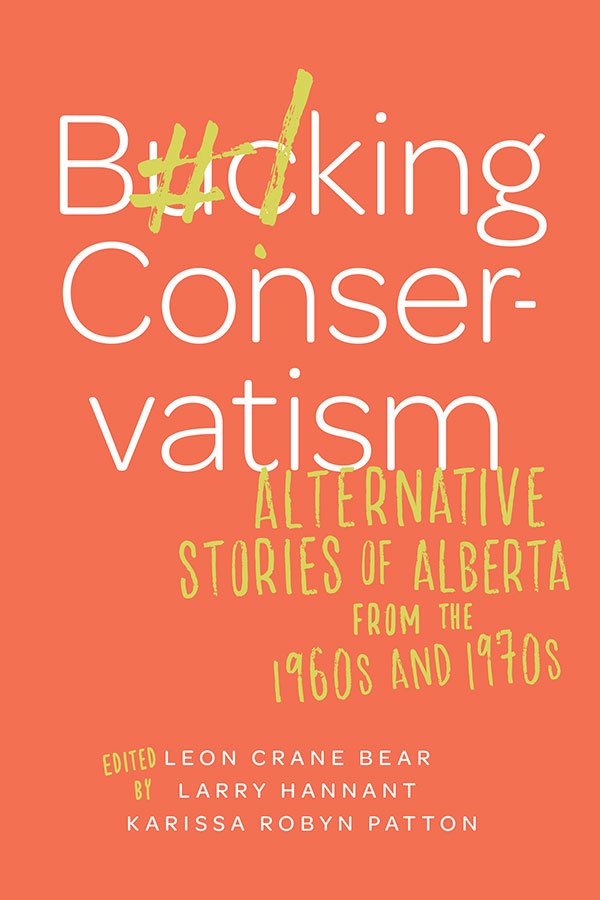Portrait of Mill Creek Ravine
In the fourth episode of A Little Bit Ritchie, we dive into the secrets of Mill Creek Ravine. The ravine, a routine escape in many of our lives, holds tightly to vital stories of Edmonton’s industrial past and perhaps is to thank for the city's early economy. Mill Creek Ravine, and the overgrowth below, conceal one of Alberta's most polluted creeks and green spaces. This episode addresses how the history of Mill Creek, as told in the popular past, contradicts itself. Additionally, we question the value of environmental activism when viewed through a colonial lens. This episode explores the stories told within the context of Mill Creek Ravine and the public perception of these stories. What voices have shaped the area as we know it today? Through this discussion, we ask: how can the community interact with these places in ways that promote reconciliation?
Subscribe Today:
Show Notes
Image courtesy of Peel’s Prairie Provinces, a digital initiative of the University of Alberta Libraries.
"Mill Creek, Edmonton, Alta.," Novelty Manufacturing & Art Printing Co., 1914.
Less than twenty years after the closure of many of Mill Creek’s industries, the Ravine was being depicted as a place for quiet leisure activities.
Image courtesy of Peel’s Prairie Provinces, a digital initiative of the University of Alberta Libraries."Noon quietude, a view on Mill Creek, near Edmonton, Alta.," ca. 1930, Douglas Co. Ltd.
Image courtesy of Peel’s Prairie Provinces, a digital initiative of the University of Alberta Libraries.
"Mill Creek, Strathcona" ca. 1910.
Frank Oliver’s Edmonton Bulletin was often used as a mouthpiece for racist perspectives on Indigenous peoples in the Edmonton area. The Papaschase peoples often were depicted in derogatory or prejudiced ways.
"South Side Reserve," Edmonton Bulletin, 1894 Aug. 2, 2.
“C.N.R. Near Edmonton," 1902, (EA-10-1134) by C.W. Mathers. Courtesy of City of Edmonton Archives.
The C.N.R. tracks cross a dirt road inside the ravine. Vogel’s packing plant rests just behind the tracks.
Pat Burns and Co. leased Vogel’s from Wilhelm Vogel in 1910.
"Pat Burns and Company packing plant, Edmonton, Alberta.", [ca. 1912], (CU180072) by Byron-May Company Limited. Courtesy of Libraries and Cultural Resources Digital Collections, University of Calgary.
"Twin City Coal Company mine, Edmonton, Alberta.", 1917, (CU155841) by McDermid Studio. Courtesy of Libraries and Cultural Resources Digital Collections, University of Calgary.
Photograph of archaeologist Haeden Stewart conducting a dig at the historic Vogel’s Packing Plant and Ross Acreage sites.
Haeden Eli Stewart, “In the Shadow of Industry: The Lively Decay of Mill Creek Ravine,” Ph.D. diss, The University of Chicago, 2019, 390.
Two images of archeological dig sites in Mill Creek Ravine. Both images depict an excavation area uncovering animal bones and other waste.
Alberta, Edmonton District Planning Commission, “Proposed Staging Freeway System,” in Metropolitan Edmonton Transportation Study: Vol 2. Plan and Program, (Edmonton, A.B., Dec. 1963), 25.
A map of Edmonton with lines indicating the proposed freeway system routes. Five Freeways are depicted as entering the city from the West, North, Northeast, Southeast, and South. The freeways connect to make a ring around the downtown area.
De Leuw, Cather, "Downtown Freeway Loop Ultimate Development Key Plan and Profile," Exhibit 35, 1969 Dec. 9.
Vicki Barnett, "Park group protests bulldozing," Edmonton Journal, 1975 Nov. 6, 33.
"Litter-ally speaking...," Edmonton Journal, 1979 May 17, 1.
"Students apply classroom skills on dig site," Edmonton Journal, 2017 July 12, 7.
Additional Resources
Dive into Haeden E. Stewart’s riveting dissertation, In the Shadow of Industry: The Lively Decay of Mill Creek Ravine.” Keep your eyes peeled for his upcoming novel about Mill Creek, The Haunted Creek: Industrial Waste and the Toxic Legacies of Western Canada.
In Episode 5 of Let’s Find Out, local historian and host Chris Chang-Yen Phillips accompanies Haeden Stewart on a trek into his Mill Creek Ravine dig sites. Tune in to this episode to learn more about Mill Creek Ravine.
Cole Kruper dives into the Metropolitan Edmonton Transportation Study in his article “Confused Planning: The Clash Between Freeways, Parkland Preservation And LRT In Mid-20th Century Edmonton.”
Christine Stewart reads an adaptation of her artfully-written piece “Propositions from Under Mill Creek Bridge.” Read her work in Sustaining the West: Cultural Responses to Canadian Environments.
Shannon Stunden Bower discusses anti-freeway activism in “The Affordances of MacKinnon Ravine: Fighting Freeways and Pursuing Government Reform in Edmonton, Alberta.”
PearlAnn Reichwein and Jan Olson’s chapter “The Mill Creek Park Movement and Citizen Activism in Edmonton, 1964–75” in Bucking Conservatism: Alternative Stories of Alberta from the 1960s and 1970s.
Take a look at the Canada and Lameman 2008 Decision on behalf of the descendants of the Papaschase Band. We will dive into greater detail on this case in an upcoming episode.
ADDITIONAL INFORMATION
An early written account of the Creek comes from an 1862 account of “Overland’ settlers from the Cariboo Gold Russ in British Columbia. The settlers were in search of Fort Edmonton when the traitorous wooded ravine blocked their path.
Key individuals in STOP included Paul McGaffy, Program Director, Pat Allision, Coordinator Mill Creek Story, Rhonda Bond, Bill Duke, Les Tolman, Research Long Range Planning, Anne Packer, Louise Swift and Mimi Mah, resident artists, Ken Tookey, who wrote a story about “Mill Crick,” and Alf Savage, Public Affairs Commissioner.
The Mill Creek Park plan initially put forward by the City of Edmonton in 1975 had recommended the city acquisition of 420 private homes, however, this plan was scrapped because of Mill Creek Build A Park activism. A revised plan put forward in the late summer of 1975 instead recommended the acquisition of only 32 homes.
LAND ACKNOWLEDGEMENT AND RECONCILIATION RESOURCES
Reconciliation Committee: A Little Bit Ritchie is more than entertainment and celebration. It is also a mutual learning method. The league has developed a Reconciliation Committee to foster this learning, which aims to work with the community to understand the history of the lands we call home. We hope to learn more about the rich indigenous history of the area and build stronger relationships with today's communities and residents. The committee hopes to explore what these lands mean to us and develop a deeper appreciation with bi-weekly meetings, which will create educational opportunities for the community through readings, discussions, and guest speakers.
In an effort to re-structure how we perceive and interact with the community we serve, the League would love to hear lesser-known stories about the lands currently known as Ritchie and Mill Creek Ravine. These stories can help shape how we acknowledge these lands and support our goals of building an equitable, welcoming community for all through reconciliation and local action. Let us know how you show gratitude for the lands you call home or what brings you joy in your community. If you want to share a story, please contact Seghan at civics@ritchie-league.com.
LOCAL ORGANIZATIONS
The podcast “Our Foods: Chatting about Métis food Sovereignty” from the University of Alberta’s Faculty of Native Studies explores many aspects of food sovereignty in the Métis community.
The University of Alberta offers a free online course about Indigenous history in Canada.
Turtle Island Safer Spaces works with local businesses to facilitate learning and proactive allyship for Indigenous youth.
Mâmawô ayâwin at Edmonton Public Library is a platform for gathering and learning, developed from Edmonton Public Library’s response to the Truth and Reconciliation Commission of Canada's calls to action.
CORRECTIONS
__
NEXT TIME
In our next episode, we’ll take a closer look at Gainer’s meatpacking plant.
CALL TO ACTION
To show your support for the Ritchie Community League, consider The Ritchie Crew Subscription Service.
Craving a savoury snack? You’re in luck! Our friends at Farrow Sandwiches are serving a Centennial exclusive, "Always Sunny in Ritchidelphia,” until mid-June! Head over to any of their four locations to taste Farrow's take on a classic Philly Cheesesteak, which features sautéed peppers and onions, cheese wiz sauce, donair meat, candied jalapenos, gravy mayo, and crisp arugula!
Farrow’s flagship shop opened in Garneau in 2014, and now they've got four locations around the city, including their Ritchie shop on 98th Street and 76th Ave. Farrow sources the highest quality ingredients to give the beautiful city of Edmonton a taste of the finer things in life. You can pop by this Ritchie hot spot every day from 8-5 for coffee, house-made donuts, and of course, supreme sandwiches.
Follow us on Facebook, Twitter, and Instagram! Find us on Apple Podcasts, Amazon, Apple Podcasts, Stitcher, Spotify, and Google Podcasts, and don’t forget to give us a rating and a review.
If you have a story you would like to share in a future episode of A Little Bit Ritchie, send us an email at community-planning@ritchie-league.com.
CREDITS
A Little Bit Ritchie is brought to you by the Ritchie Community League Centennial Celebration Committee. Erin Fraser and Seghan MacDonald chair the committee. Our primary researcher is Linnea Bell. Elyse Colville wrote this episode. Thank you to Haeden Stewart for speaking to us about your expansive knowledge of Mill Creek Ravine. A Little Bit Ritchie is produced by Castria Communications and Media Solutions and hosted by Lydia Neufeld. This project is supported by the Edmonton Heritage Council and the City of Edmonton. Thank you to Tierra Connor for creating our artwork. Our theme music is “Twin Ponds” by Hemlock.



















